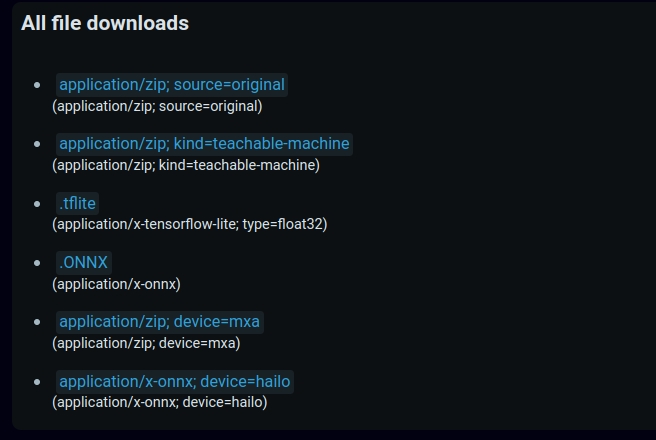Introduction
The Nx AI Manager accelerates AI models inference using various built-in runtimes, each of which is dedicated to a specific platform and AI accelerator (CPU, GPU, NPU, etc.). These runtimes are seamlessly integrated within the AI Manager, facilitating effortless utilization for individuals employing new runtimes and harnessing various forms of AI acceleration.
When a user uploads a supported AI model to the Nx AI Cloud, the uploaded model file is subject to several conversion processes, each of which generates a new model artifact that is used by one of the runtimes that are provided.
Example of a Teachable Machine model
Suppose you've trained a teachable machine model, and exported it according to the guidelines mentioned here, the following model artifacts are stored to be used by the Nx AI Manager when needed:

application/zip; source=original: is the original ZIP archive that's uploaded in the interface.application/zip; kind=teachable-machine: is the same file that's uploaded but with a different MIME type after detecting its nature.application/x-tensorflow-lite; type=float32: is the TFLite file that's extracted from the TM archive.application/x-onnx: the TFLite generated in an earlier stage is converted to ONNX, validated and optimized to run on both CPU and Nvidia hardware. Please note, that in this step, no quantization is performed on the model.application/zip; device=mxa: is the artifact generated by compiling the ONNX file into an optimized file dedicated only for MemryX hardware.application/x-onnx; device=hailo: is a custom ONNX generated specifically for Hailo-8 chips.